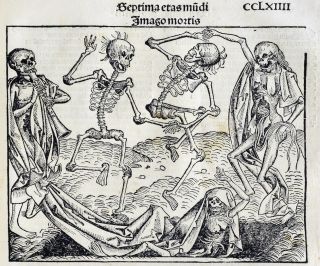The Black Death
Plagued: Humanity’s History with Disease, Outbreaks, and Pandemics
Podcast Series – Part 2

The Black Death spread across the eastern hemisphere in the middle of the 14th century. It killed an estimated 50 million people in Europe. Sixty percent of Europe’s population was wiped away by the plague of the Black Death. In Asia another 75 million perished. It is known as the worst catastrophe of human history.

We look at the Black Death, the great-granddaddy of the pandemics, in Part 2 of our podcast series Plagued: Humanity’s History with Disease, Outbreaks, and Pandemics. The weight of the Black Death on human civilization’s consciousness is so strong that more than nearly 700 years later when alarms are raised about an outbreak or a pandemic, it is the memory of this plague that rises to our consciousness.
People who contracted the disease died within half a day to five days later. Many of them died alone as their friends and family members ran away from them. Every demographic of society was affected along with every class, race, and religion.

In Florentine Italy it was recorded:
All the citizens did little else except to carry dead bodies to be buried […] At every church they dug deep pits down to the water table, and thus those who were poor who died during the night were bundled up quickly and thrown into the pit. In the morning when a large number of bodies were found in the pit, they took some earth and shoveled it down on top of them; and later others were placed on top of them and then another layer of earth, just as one makes lasagne with layers of pasta and cheese.

Even after the most thunderous years of plague in the middle of the 15th century, outbreaks reoccurred every generation (every 20 years) for the next few centuries.










